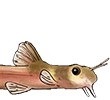DanL wrote:how long can you leave a piece of zuchinni in a tank before fouling the water.
Not that this is really an issue that I've had problems with, but I wouldn't leave it more than 24 hours. Mine go through a slice or two in less than that anyways (the skin MAY be left after 24 hours in where the babeis are).
Zucchini isn't the worst fouler of whater, but to be safe, I'd remove anything that hasn't been eaten in 24 hours. If there's lots left after 24 hours, try a smaller piece next time. If there's absolutely nothing left in the morning, make it a bigger portion...
If they don't eat it at first, but start making dents in it after a day or so, you may want to boil it a little bit (or more), so that the flesh is a little bit softer.
--
Mats





